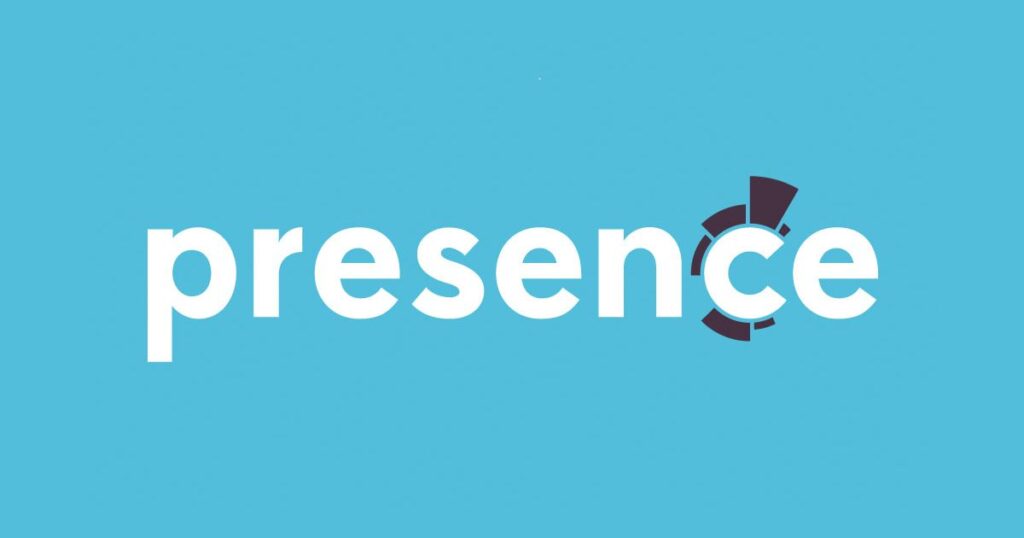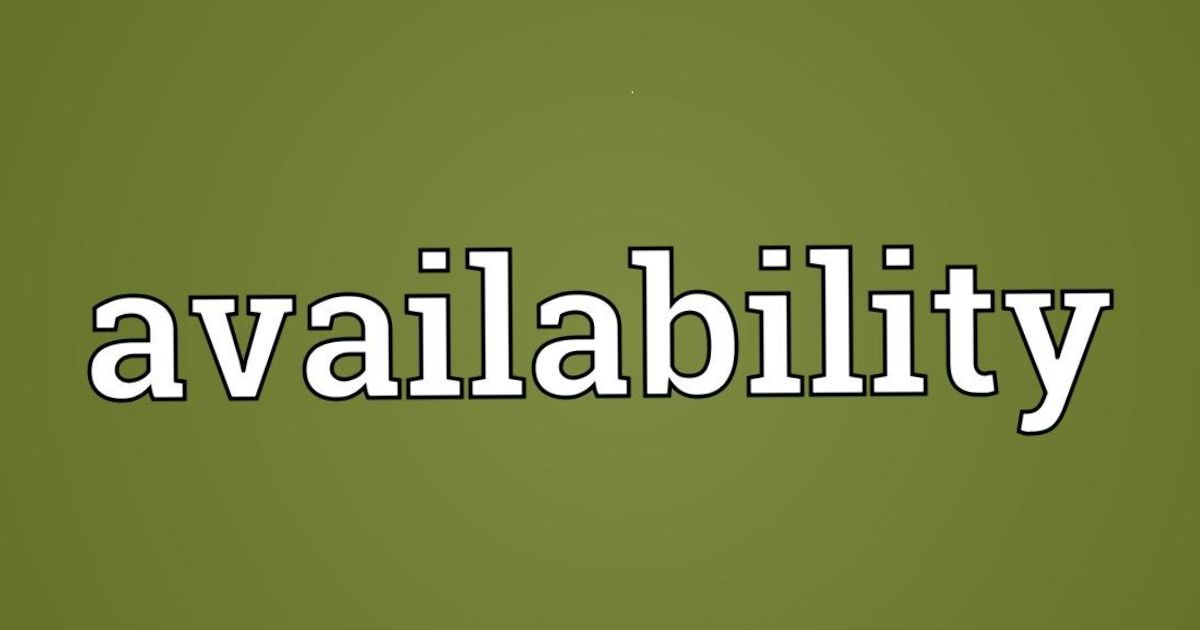Availability is more than just being there, it’s the secret ingredient that makes everything run smoothly. Whether in work or daily life, availability shapes how we connect, trust, and succeed. It’s not just about showing up; it’s about being present and ready to act when needed. A strong sense of availability creates an environment where collaboration thrives and communication flows effortlessly. You can rely on others, knowing they’ll respond quickly and flexibly.
In a world where we’re constantly on the go, availability has become crucial. It’s about being there, whether physically or online, and being adaptable in any situation. From fostering engagement to encouraging innovation, availability is the backbone of teamwork and success. The more available we are, the better our connections, and the stronger our results. Availability isn’t just important; it’s essential for building thriving, dynamic environments.
- Availability is more than just being present, it’s about being prepared, suitable, and responsive across physical, digital, and emotional dimensions.
- Readiness and preparedness ensure consistent availability, especially in fast-changing or high-pressure environments.
- Flexibility and attentiveness improve team dynamics by adapting to change and staying mentally engaged, enhancing overall availability.
- Engagement transforms passive availability into active participation, driven by motivation, feedback, and communication.
- Usability, accessibility, and suitability ensure that resources and people aren’t just available, but also effective and inclusive.
Readiness plays a crucial role in both personal and professional settings. It refers to the state of being prepared and willing to engage when the need arises. When discussing availability, it’s often tied to how quickly and effectively someone can respond to a task or situation. For example, in a work environment, employees’ readiness to take on new projects or challenges enhances overall productivity and contributes to the team’s success.
Proactive readiness involves anticipating needs and being mentally prepared for what’s to come. Availability in this context means not just being present but also prepared to act at a moment’s notice. The best teams are those that have individuals who anticipate the needs of the organization and are ready to pivot when new opportunities arise.
Furthermore, readiness can be a sign of organizational efficiency. When systems and people are prepared and available, they can make faster decisions and execute plans more effectively. By fostering a culture of readiness, you create an environment where everyone can contribute actively and make an impact when their availability is required.
Accessibility refers to the ease with which resources, services, and information are available to everyone, regardless of their individual circumstances. It’s not just about physical availability; digital accessibility plays a crucial role too. In today’s technology-driven world, ensuring your online platforms are accessible and available to all is paramount. For example, websites and apps must be designed to accommodate people with varying needs, ensuring full participation.
In terms of availability, accessibility means that individuals can engage with platforms and resources when they need them. Accessibility goes beyond meeting standards, it means creating inclusive environments where everyone has the freedom to access and use resources, which boosts participation rates. The more accessible a system is, the more people feel comfortable and willing to engage.
When accessibility is prioritized, organizations not only reflect their commitment to inclusivity but also improve engagement. Whether in a physical or virtual environment, making resources readily available to everyone creates a culture of collaboration, increasing both motivation and productivity.
Openness in a team or organization can directly influence how effectively they function. It is about fostering an environment where availability of information is encouraged and where ideas flow freely between individuals. A culture of openness leads to better communication, which is essential for smooth operations. In fact, when people are willing to share information, the flow of ideas leads to innovation and creativity.
Openness also means being available to feedback and willing to adapt. If someone is not open to suggestions or perspectives, it can create a barrier to effective collaboration. By being open, individuals encourage a more dynamic environment where everyone feels their input is valued, leading to better team dynamics and greater participation.
For leaders, openness extends to being available for meaningful conversations with team members. When leaders actively listen and show willingness to engage, they create an atmosphere where team members are motivated to contribute more and feel like their efforts matter. This strengthens organizational culture and nurtures engagement strategies that promote long-term success.

Presence is not just about showing up; it’s about actively participating and engaging. Whether it’s physical presence or virtual presence, being available and involved is key. In many organizations today, virtual presence has become just as important as physical attendance. With the rise of remote work, being virtually available has become crucial for maintaining collaboration and ensuring tasks are completed on time.
In the context of availability, presence means more than just logging into a meeting. It’s about being mentally and emotionally available to your team. Active participation in meetings, offering constructive feedback, and ensuring that your expertise is available when needed are all vital for fostering teamwork and collaboration.
The concept of presence also ties into engagement. A strong presence, whether virtual or physical, creates a sense of belonging and motivates others to be engaged. It encourages people to actively contribute, knowing that their presence is valued and their availability to collaborate is appreciated.
Willingness is the readiness to take on new challenges, be open to new ideas, and engage fully with tasks at hand. When we think about availability, it’s not just about being there physically but also having the mental and emotional readiness to contribute. Someone who is willing to help, listen, or offer support can drive success in any team setting.
In professional environments, willingness to participate often determines the overall success of projects. A team member’s willingness to be available for different tasks, even outside their regular responsibilities, can make a significant impact. This flexibility is crucial for fostering an adaptable team culture where everyone is encouraged to help and contribute.
A willing mindset also directly ties into organizational culture. When leaders and employees alike exhibit willingness to engage and make themselves available, it helps create an environment that fosters growth, innovation, and long-term success. Encouraging willingness from everyone ensures that resources are allocated effectively, and goals are met collectively.
Red More: 15 Other Ways to Say “Interpersonal”
Capability refers to the potential to perform specific tasks effectively, but it also includes the availability of the necessary tools, resources, and skills. To perform optimally, individuals must be available not only in terms of time but also in their ability to leverage resources effectively. For example, ensuring that employees have access to the right tools enhances both capability and engagement, allowing them to perform their best work.
Developing capability often involves continuous learning and capacity building, where individuals work on enhancing their skills and increasing their proficiency in various tasks. This continuous improvement helps teams adapt to new challenges and respond to situations with proactive readiness. As a result, organizations can rely on their workforce’s availability to perform at a high level under pressure.
Ultimately, enhancing capability ensures that individuals and teams are always ready to tackle any situation. It encourages self-improvement and builds resilience, so teams remain effective even in the face of adversity. By investing in capability development, organizations increase their overall efficiency, boosting employee engagement and productivity.
Preparedness is the foundation of a responsive and agile organization. It encompasses proactive planning and resource organization, ensuring that availability isn’t left to chance. Whether dealing with customer inquiries, internal emergencies, or high-pressure deadlines, teams that prioritize preparedness maintain consistent availability, no matter the situation.
In a dynamic work environment, emergency preparedness ensures that teams can respond quickly and efficiently. This involves not only having physical resources in place but also ensuring that staff are trained and available to act. Preparedness creates confidence, and when employees know systems are in place, their availability to focus on core tasks improves drastically.
Additionally, preparedness fosters a culture of responsibility. When people plan ahead and anticipate needs, they become more mindful of their roles. This readiness ensures availability across multiple touchpoints, be it leadership presence, communication channels, or operational continuity.
Usability isn’t just about how something works, it’s about how easily someone can access and use it. If a product or service isn’t usable, its availability doesn’t matter. Great design ensures that product usability aligns with user feedback, making tools, platforms, and systems accessible and functional for everyone.
In software and systems, usability affects availability by minimizing downtime, reducing errors, and improving satisfaction. Features like user-friendly navigation, intuitive interfaces, and consistent performance all contribute to ensuring digital accessibility and system availability. A well-designed tool encourages users to return because they trust its reliability.
Usability is often tested through user testing and feedback forms, both of which gauge how accessible and usable a product truly is. This feedback leads to continuous improvement, ensuring the availability of better, more responsive solutions. A usable system is one that’s consistently present, responsive, and inclusive.
Attentiveness reflects how present and engaged a person is in the moment. It demonstrates mindfulness and signals a deeper level of availability, especially in one-on-one or team interactions. When someone is truly attentive, they show up not just physically but mentally and emotionally as well.
In leadership, attentiveness fosters trust. Employees feel heard and understood when their managers are actively listening and engaging in real time. This kind of consistent availability promotes a positive organizational culture, where feedback flows naturally and issues are resolved more quickly and thoughtfully.
Moreover, attentiveness enhances team performance. By practicing active listening and showing mindful presence, individuals make their availability more meaningful. They aren’t just present, they’re involved, committed, and focused, which helps improve collaboration and strengthens working relationships.
Flexibility is the ability to adapt quickly to change without losing momentum. It directly impacts availability, especially in fast-paced work environments. A flexible team or system can adjust to unexpected demands, shifting priorities, or last-minute changes, while maintaining consistent presence and productivity.
In modern organizations, flexibility in scheduling is a major factor in improving employee engagement. By allowing team members to manage their own time, companies ensure better availability across different time zones and working styles. This not only enhances well-being but also ensures that work gets done efficiently.
Flexibility in decision-making also enables quicker responses and supports resilience. When people can pivot and adapt on the fly, their availability becomes more strategic and impactful. They aren’t just available by chance, they’re positioned to add value whenever and wherever it’s needed.

Suitability is about aligning the right person, tool, or process with the right task. It’s not just about availability, but whether that availability adds value. A resource might be available, but if it’s not suitable, its impact is limited. Suitability ensures that time, effort, and skills are all optimized.
In hiring or team assignments, suitability ensures that the available talent is the best fit for the role. Matching skills to tasks results in better team performance, improved outcomes, and stronger engagement. It’s about quality availability, not just quantity.
Even in technology, suitability determines whether a tool should be used or replaced. It ties into resource allocation, where companies ensure that what’s available is also the most effective. True availability is about being both present and purposeful in every scenario.
Engagement represents the depth of involvement someone has in a task or environment. It’s one thing to be available, but engagement shows how actively someone participates. Without engagement, availability becomes passive and less impactful.
Highly engaged teams are consistently present and involved, showing up with motivation and focus. They bring a high level of availability to their work, physically, mentally, and emotionally. Engaged employees are more likely to contribute to community initiatives, participate in collaborative efforts, and provide valuable user feedback.
To foster engagement, organizations use engagement strategies like open communication, feedback forms, and flexible schedules. These strategies help maintain continuous availability, ensuring that everyone has both the opportunity and motivation to contribute meaningfully. The result is a stronger organizational culture built on connection and purpose.
In conclusion, availability is key to success. It builds trust and strengthens relationships. When you’re available, people feel supported and heard. It’s not just about being present; it’s about being ready to respond and adapt. Availability helps teams work better and communication flow smoothly.
By prioritizing availability, you create an environment where everyone feels engaged and motivated. Whether it’s in person or online, availability makes a difference. It encourages collaboration, participation, and quick action. The more available you are, the more successful you and your team will be. Availability truly is the foundation of a strong, dynamic work culture.

Grammarbeam is a smart language assistant built for clarity, creativity, and precision. From polishing grammar to exploring rich synonyms and refining sentence structure, Grammarbeam is your go-to tool for powerful communication. If you’re writing for school, business, or just for fun — let your words shine with Grammarbeam.

